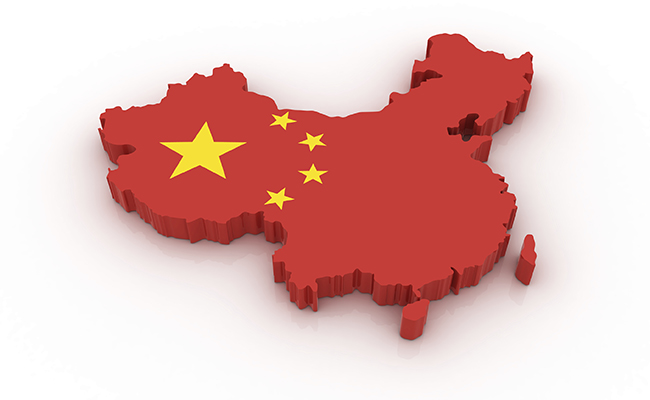The week that was: The Chinese government chooses not to bail out the beleaguered Chaori; RMB depreciation goes on even as the trading band is widened; Zhejiang Xingrun Real Estate heads for bankruptcy; and Twitter CEO Dick Costello visits Shanghai.
China’s debt problems are not disastrous yet?
Shanghai-based solar cell manufacturer Chaori Solar Energy and Science and Technology’s failure to honor its monthly interest payment of $14.5 million last week marks the first default in China’s bond market, triggering worries that more are expected to come, as the government unprecedentedly chose not to offer a bailout this time.
While the incident signals more volatility in markets, “it’s not going to be a Lehman moment”, DBS Private Bank Chief Investment Officer Lim Say Boon told CNBC, because both the banks and the major borrowers are government-owned. So real problems would occur when local governments are directly involved in the defaults, according to a Goldman Sachs note.
But the default may actually be good news for the local governments, says the Financial Times, as in reality, there’s “a line between weak private companies and weak government-backed companies”. It’s unlikely that the government will allow the latter, or local government financing vehicles (LGFV), to default because of serious financial and political implications. So higher risks in private companies’ bonds may attract investors to those safer LGFVs.
The yield of local government five-year AA notes has fallen near a four-month low, the newspaper says, and the gap between the yields of local government bonds and top-rated central government bonds has also narrowed. An “instructive” example is that another solar cell maker, Tianwei Baodian. Although it has been suspended from public trading because of consecutive losses, it has retained its AA rating because it’s backed by the government, the Financial Times reports.
How much can China’s real estate market cool?
Another (near) default is also in the spotlight this week—Zhejiang Xingrun Real Estate Co, a Ningbo-based developer is on the brink of bankruptcy, putting its $389 million bank loans and $180 million debts from individual investors in jeopardy, according to Reuters. The owner and his son are now in custody for alleged illegal fundraising activities.
Potentially the first default in the real estate market, Xingrun’s failure is accompanied by cooling housing prices in Beijing and Shanghai, Reuters data shows. Residential properties are still becoming more expensive, but at a lower rate than previous months. But for wannabe home owners waiting for a dip in prices, analysts are not betting on a domino effect, as Xingrun is a local player with limited influence on the national market.
While Xingrun struggles, two developers have gotten regulatory approval to raise more money through private placements of A shares, Bloomberg reports, ending the halt imposed since 2010 for real estate companies to borrow new money through the stock market, a measure to cool off housing prices.
The new urbanization plan released by the state department last weekend also sends a mixed message. While the reconfirmation of Beijing’s ambition to move more people into the cities has raised share prices of related industries, some observers say that skyrocketing home prices are actually obstacles to realizing the goal. They argue that although urbanization will provide “rigid demand”, keeping the prices in an affordable range is also crucial. This may remind people of a well-known slogan that appeared in a Beijing real estate commercial some years ago: “The price won’t jump; it only does push-ups.”
Trading band widened, Yuan falls
The People’s Bank of China (PBOC) loves to make important announcements during weekends. On Sunday, the central bank announced that the trading band of the RMB, a floating range allowed around a predetermined parity rate against the US dollar, would be widened from 1% to 2% on Monday.
Observers have predicted further loosening of the band in 2014, but the context in which the decision was made might have thrown many off guard. The RMB has been losing value against the dollar since the new year, spooking foreign exchange speculators that the central bank is the invisible hand that is pressing the currency down. Increasing the band could have sent the RMB to either direction—it could fall if the PBOC decided to interfere more, and it could bounce back a little if investors still believed that the currency is undervalued.
What has happened so far lines up with the first scenario, as the yuan fell more than 1% to a 12-month low on Wednesday, according to CNBC. It even crossed the threshold of 6.2 against the dollar, a line that many analysts believe would trigger more selling by investors to cut losses.
The PBOC has denied that it has anything to do with the yuan’s depreciation. On Wednesday, Ministry of Commerce spokesperson Shen Danyang told the media that the RMB’s “real effective exchange rate” remained on the rise, the South China Morning Post reported. This rate had rose by more than 2% in January, according to Bank for International Settlements.
The real effective exchange rate of a currency, or REER, is used to determine its value relative to multiple major currencies, as adjusted for the effects of inflation. Shen added that the recent fluctuations of the RMB are normal when compared with currencies of some other emerging markets and is a result of deepening exchange rate reforms.
Xi goes shopping in Europe
Chinese President Xi Jinping is off to Europe for an 11-day visit tomorrow, and he might take deals that are worth billions with him.
According to Reuters, China is in talks with French aircraft maker Airbus to buy 150 planes. The final size of the deal might change, as negotiations are ongoing, Reuters sources say. Neither Airbus nor the Chinese government has confirmed the talks. In addition, Airbus is reportedly in talks to open its second major factory in China (the current one is in the city of Tianjin). The Reuters story adds that Airbus’s competitor Boeing is also in talks to sell “similar quantities” of jets, as Beijing tended to buy equally from both manufacturers in the past.
China’s civil aviation sector is expanding fast—in 2013, 25% of people traveled by air at least once, and China’s three big carriers (Air China, China Eastern and China Southern) on average saw a 20% increase of international passengers. According to Xinhua, China will add more than 4,000 passenger jets by 2032 and accounts for 17% of all airliners in the world.
Twitter CEO’s Shanghai visit is “personal”
The line between a “personal” trip and a “business” one is always blurry for high-profile executives like Twitter’s Dick Costolo, who, according to Shanghai Daily, was scheduled to meet with Shanghai government officials and universities officials on Monday.
Costolo was supposed to ask local officials about market liberalization measures and drop by Fudan University, Shanghai’s most elite, to meet with academics and students. Twitter’s statement says the CEO’s trip is to learn more about Chinese culture and the country’s tech sector. And no, he probably didn’t ask the authorities to unblock his site in China.
However, Costolo’s trip is more noticeable than Mark Zuckerberg’s in early 2012. The young billionaire of Facebook was spotted in Shanghai’s streets wandering around with his Chinese-American girlfriend (now wife). People quickly started to guess if the world’s most popular social network was making a comeback to China, where many foreign websites are blocked.
Although Twitter has been shielded from internet users in China since 2009, a Business Insider report last year claims that the site has 80 million users in the country.



















